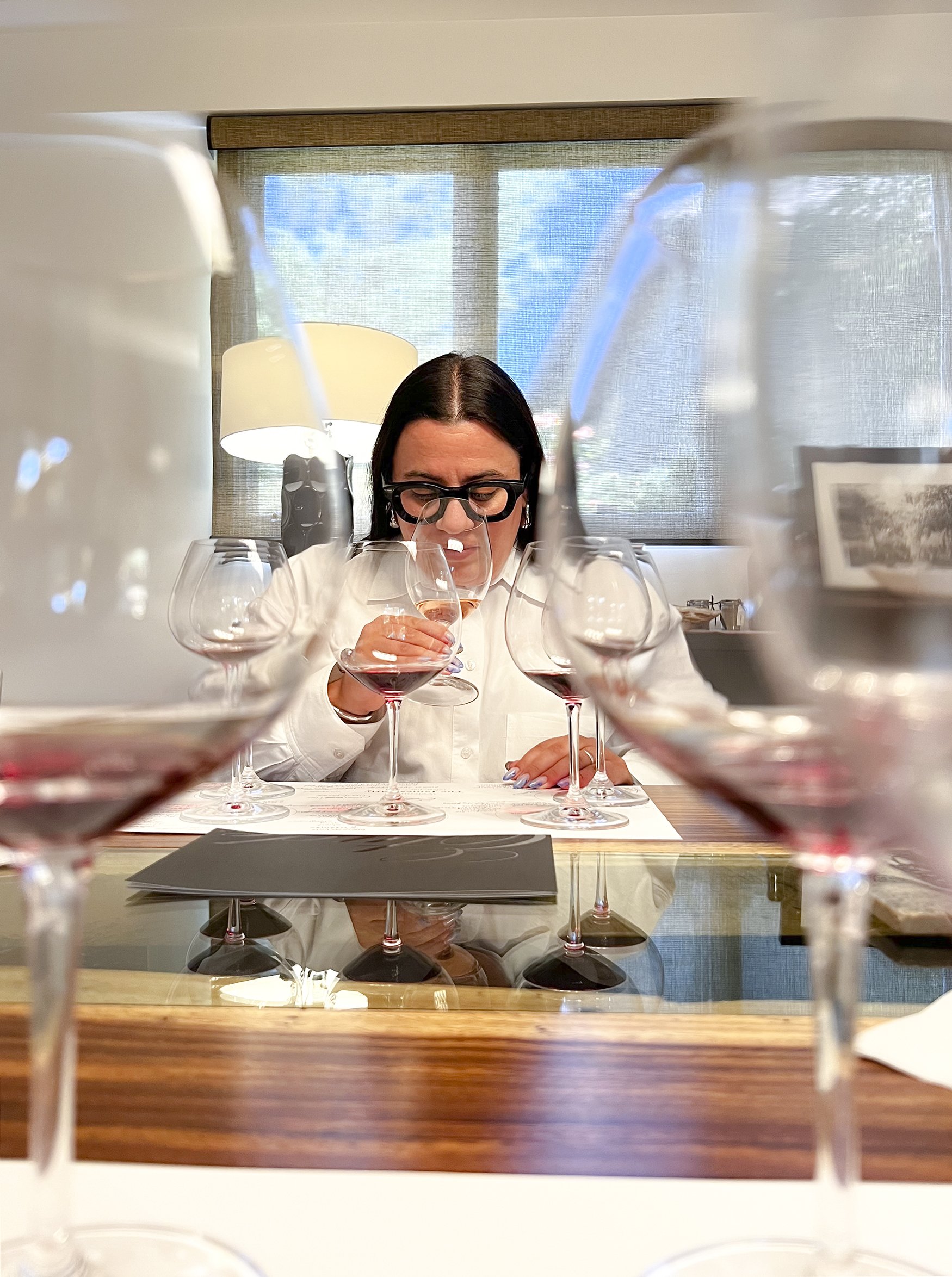How to Prepare for the WSET Level 2 Award in Wines Exam - My Tips for Passing the Test
This morning I received an email with my WSET Level 2 Award in Wines exam results—I passed, with Merit. My score was an 84%, making it one point shy of receiving a Distinction honor. As my husband woke up, I ecstatically shared this news with him and he squeezed me tight and expressed how proud he was of me. I started to go on about this 1% off from Distinction and he politely reminded me of the call I made from my rental car outside of Rutherford House on that stressful rainy day in Napa, expressing my fears that I potentially didn’t pass. I was thankful for his words and we continued to celebrate.
I have been nervous since taking the test in January, anxious to receive news of a failing grade. I have a specific way of studying and because of my rigorous workload and travel schedule, I neglected my study schedule. Many WSET classmates discussed not taking a test in some years but I could not relate, as I have been at the top of my class in three consecutive college French courses since 2022. Higher learning keeps me motivated and continually inspires me; my brain seeking deep stimulation. Although the days leading up to the exam were jam-packed with two 8-hour review courses with a Master Sommelier, practice tests, and all-night studying in my hotel room, I didn’t feel fully prepared, and the possibility of failing haunted me. I am thankful for passing and with Merit, but knowing I could have done better is a feeling that will need to run its course.
On a playful note, since taking the test at the top of the year, I’ve had many dreams (and some nightmares) where I find myself describing wine notes to people, a reality that feels ridiculous to say out loud. The study of wine has evolved into a fascinating discipline for me. I love acquiring knowledge about a complex tradition and look forward to taking my WSET Level 3 Award in Wines.
What is WSET Level 2 Award in Wines?
The Wine & Spirit Education Trust (WSET) is an organization focused on the development and delivery of qualifications, awards, and courses in wines and spirits. Established in 1969 for the UK wine trade, WSET has since grown to become the global industry leader.
The WSET Level 2 Award in Wines is a globally recognized qualification designed to provide a thorough understanding of the world of wine. It covers key grape varieties and wine styles, the factors influencing wine quality, the principles of food and wine pairing, and the correct storage and service of wine. The course is suitable for both wine enthusiasts and those working in the hospitality or wine industry who wish to enhance their knowledge and expertise.
Here’s an example test question:
Which of the following is not a village AOC in Burgundy?
a) Beaune
b) Gevrey-Chambertin
c) Nuits-Saint-Georges
d) Pomerol
How to Prepare for the WSET Level 2 Award in Wines
Preparing for the WSET Level 2 Award in Wines can be a challenging but rewarding endeavor. As a wine enthusiast or industry professional, the certification provides authoritative knowledge of wines and is recognized globally. My approach to studying began with familiarizing myself with the WSET Level 2 exam’s structure. Understanding the exam format is crucial, as it includes a range of multiple-choice questions that cover topics from grape varieties and wine styles to wine tasting and food pairing principles.
I had the privilege of being led through a WSET schedule by two enthusiastic wine teachers at my Treasury Wine Estates’ job, Megan Henderson, TWE’s Education Content Manager, and Master Sommelier, Gillian Balance. When we first began our journey in November, they created a study schedule that would allow us time to cover each section of the curriculum thoroughly.
Practicing with past papers and sample questions was an integral part of my exam preparation. This familiarized me with the types of questions to expect and helped me gauge my understanding of the course material. Moreover, participating in an intense two-day study seminar with wine-tasting sessions offered new perspectives and insights, making my study process interactive and engaging.
If you can commit to a comprehensive study plan, I am confident that you will be well-prepared for the WSET Level 2 exam. If you’re entering WSET 2 with above basic wine knowledge, with a bit of studying, you will succeed.
Exam Format Overview
The exam consists of 50 multiple-choice questions. Exam takers have 60 minutes to complete the test. The questions are designed to assess knowledge across a range of topics covered in the WSET Level 2 course. I like to take my time during a test, even if I am confident in my answers, so I’d recommend not rushing and reviewing your exam once completed.
Scoring System and Passing Criteria
To pass the WSET Level 2 exam, you must achieve a score of 55% or higher. This equates to correctly answering at least 28 out of 50 questions. The results are graded as follows:
Pass: 55-69%
Pass with Merit: 70-84%
Pass with Distinction: 85% or above
Key Syllabus Topics
The core topics in the WSET Level 2 syllabus include:
Understanding Styles: Comprehending the styles of wines.
Key Grape Varieties: Knowledge of the characteristics and styles of wines produced from major grape varieties is crucial.
Major Wine Regions: The ability to associate grape varieties with the major wine regions of the world.
Production Methods: Expect to know basic production methods for still, sparkling, and fortified wines.
Label Terminology: Interpreting key terms found on wine labels is part of the exam.
Principles of Wine Tasting and Service: Understand the fundamentals of wine tasting and the proper methods of wine service.
Effective Study Strategies
To excel in the WSET Level 2 Exam, focus on organized study strategies and pragmatic tasting practices, coupled with the support of study groups and effective time management. Flash cards, which have always played an important role in my educational journey, were crucial in memorizing the necessary wine information. At every chance, I whipped out my cards and quizzed myself. Even when exhausted and in my hotel bed, decompressing with the Real Housewives of Salt Lake City in the background, I could easily review my flash cards.
Creating a Study Plan
Start by setting clear objectives and breaking down the syllabus into manageable sections. At least one month of studying is recommended for full immersion. A typical week might look like this:
Monday: French wines – regions, characteristics.
Tuesday: Review Monday's notes, practice questions.
Wednesday: Italian wines – regions, characteristics.
Thursday: Review Wednesday's notes, practice questions.
Friday: Tasting practice using WSET Level 2 SAT (Systematic Approach to Tasting) wine.
Utilizing Official WSET Materials
Studying and practicing with WSET-provided materials was essential for passing the exam. The key resources include:
Wines: Looking Behind the Label: A thorough read-through, followed by note-taking on critical information.
WSET Level 2 Award in Wines Workbook
Former exam questions: To familiarize myself with the exam format and question style.
Study Group Benefits
Joining a study group or study seminar enhances learning through:
Collective knowledge sharing: We pool our understanding to cover more ground.
Moral support: A shared journey keeps motivation high, easing stress.







